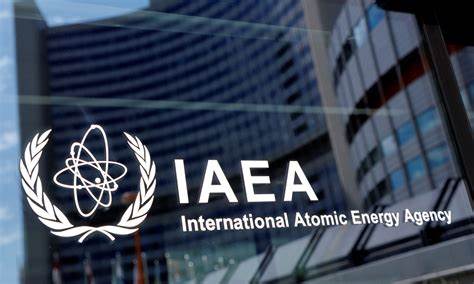
In a pivotal move towards advancing its scientific capabilities and energy ambitions, Kenya has garnered praise from the International Atomic Energy Agency (IAEA) for its significant strides in the development of national nuclear infrastructure. The focus of this commendation lies in Kenya’s meticulous preparations for a new research reactor program, as outlined in the Integrated Nuclear Infrastructure Review for Research Reactors (INIR-RR). The IAEA team, after a comprehensive nine-day mission, has provided recommendations and suggestions to further enhance Kenya’s nuclear landscape, setting the stage for a potential quantum leap in the country’s scientific and technological prowess.
The Journey Toward Nuclear Excellence:
- Purpose of the IAEA Review Mission:
The IAEA, at the invitation of the Kenyan Government, undertook a thorough examination of the country’s nuclear infrastructure development from December 11 to 19, 2023. The mission specifically targeted the preparations for Kenya’s upcoming research reactor program, positioning the nation on a trajectory that could serve as a stepping stone toward a broader nuclear power program. - Phase 1 Criteria and Milestones Approach:
The IAEA team, consisting of experts from India and the United States of America, collaborated with six IAEA staff members to evaluate Kenya’s nuclear infrastructure in alignment with Phase 1 criteria and the conditions outlined in the IAEA’s Milestones Approach for research reactors. This systematic assessment covered various facets, ranging from nuclear safety and security to the nuclear fuel cycle, waste management, and funding and financing.
Kenya’s Strategic Approach:
- Research Reactor Programme Timeline:
Kenya’s strategic vision includes the commissioning of its first research reactor between 2030 and 2034. This ambitious timeline reflects the nation’s commitment to leveraging nuclear technology for scientific research, medical applications, and potentially as a precursor to a broader nuclear energy initiative. - Professionalism and Stakeholder Involvement:
The IAEA review mission leader, Andrey Sitnikov, acknowledged Kenya’s sustained and professional approach to the research reactor program. Notably, the nation’s meticulous efforts were evident in the development and preparation of laws and regulatory documents. Active involvement of stakeholders, coupled with robust human resource development for both operators and regulators, showcased Kenya’s commitment to ensuring a comprehensive and well-rounded nuclear infrastructure. - IAEA Recommendations for Future Development:
The IAEA team, while commending Kenya’s progress, provided valuable recommendations and suggestions to further enhance the country’s nuclear infrastructure. These insights are aimed at fortifying Kenya’s position as a regional leader in nuclear research and technology.
The Significance of Research Reactors:
- Stepping Stone to Nuclear Power:
Many countries, including Kenya, recognize the strategic importance of research reactors as a foundational step toward the development of a broader nuclear power program. These reactors serve as essential tools for scientific research, medical applications, and the training of personnel crucial for the successful implementation of nuclear technologies. - INIR-RR Mission Purpose:
The INIR-RR missions, such as the one conducted in Kenya, play a vital role in assisting nations in evaluating the status of their nuclear infrastructure. By addressing 19 critical issues outlined in the Milestones Approach, these missions provide a roadmap for countries to navigate the complexities of launching and sustaining a research reactor project.
Kenya’s commitment to advancing its nuclear capabilities is underscored by the recent praise from the IAEA. As the nation sets its sights on commissioning its first research reactor, the meticulous preparations and strategic approach showcased during the INIR-RR mission position Kenya as a potential trailblazer in the realm of nuclear research and technology. The recommendations provided by the IAEA serve as a compass for future development, marking a crucial juncture in Kenya’s journey toward nuclear excellence.





